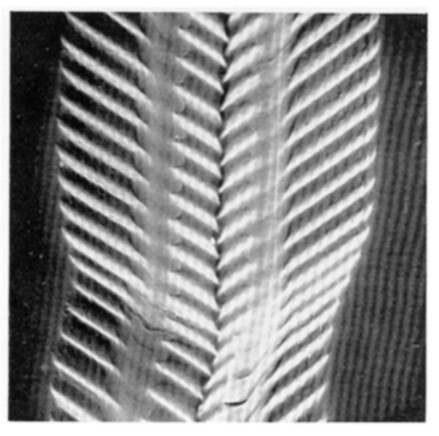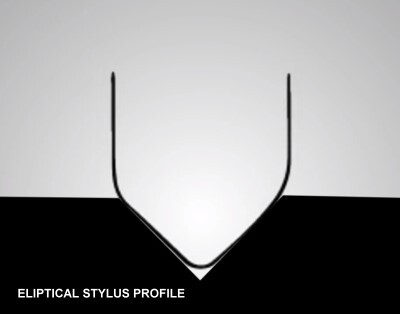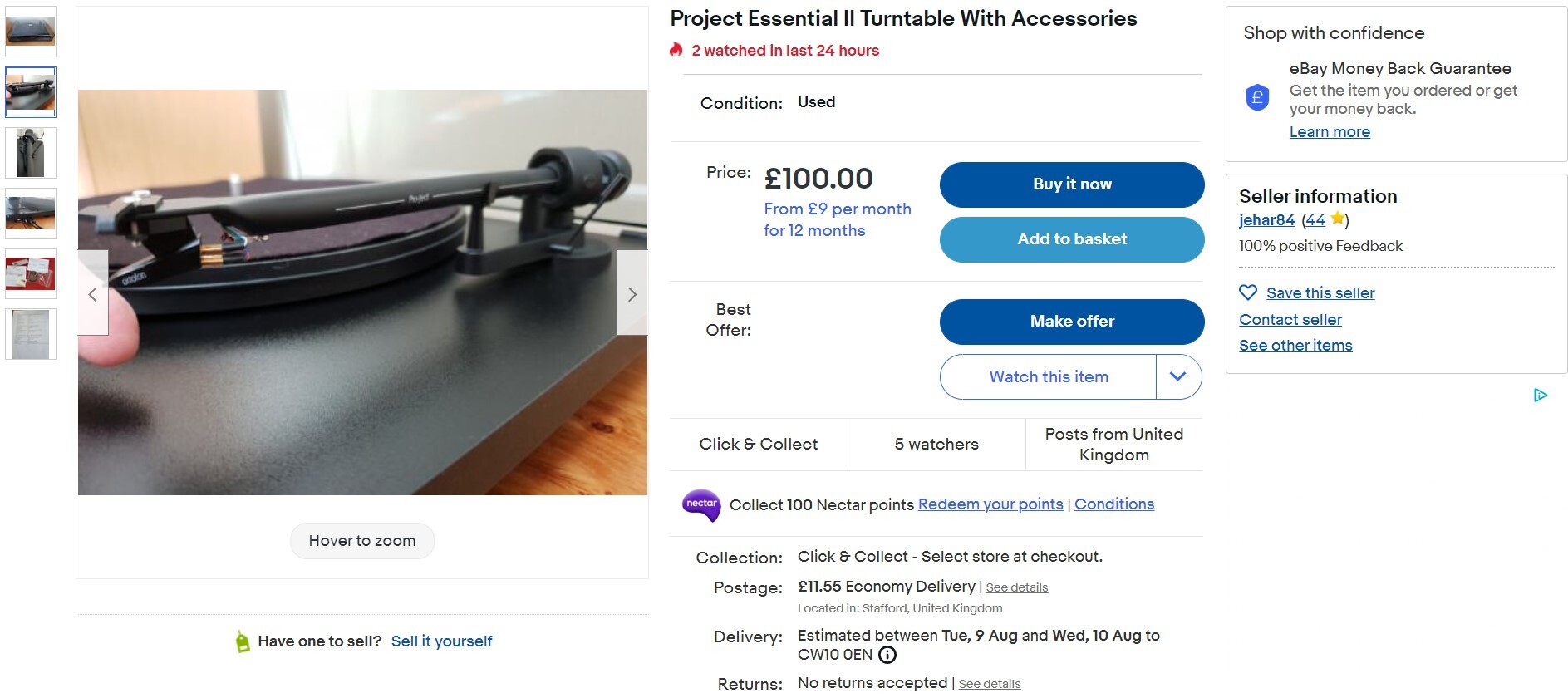To hear some people talk you'd think that using one of these turntables is akin to dragging a nail across the record. Whilst it's true that these turntables and their ilk are not the greatest, there's no conclusive evidence that they damage records the instant they're played resulting in ruined vinyl.
There's panic when people with limited knowledge see the tracking force figures at 4-5gm compared to the typical 2-2.5gm of a moving magnet cartridge. "
Oh no, it's ploughing your records. Stop. Stop!" is the cry. They track heavier because that's how the ceramic cartridges are designed to work. There's a term for the amount of flex in the cantilever which is the tiny little tube with the stylus tip that makes contact with the record surface. It's referred to as compliance. The lower the compliance then the stiffer the cantilever suspension. Ceramic cartridges of the type used in these decks need a stiff (low compliance) suspension in order to drive the mechanism that turns the wiggles in the record surface in to electrical signals. Without it there's be less signal and a lot less bass.
Other cries of anguish are heard when the tonearms on these decks are referred to a high-mass. "
Oh, high mass. (mutter, mutter) That sounds like a bad idea." say the people who haven't much idea what this really means. If you have a cartridge with low compliance then you need an arm capable of holding it in place to allow the suspension to work correctly. A low or medium mass arm would move easier than the cantilever and so the cartridge wouldn't track correctly. The mild effect would be a loss of bass, and at the other end of the spectrum the tonearm would allow the stylus to mis-track, jumping clean out of the groove every time there was some bass in the signal.
These budget turntables certainly have their problems, and I wouldn't recommend one as anyone's first step back in to vinyl. However, if that's what you've got then you shouldn't let the fear mongers stop you using it. You will though need to change the stylus quite frequently. They last something like 40-50 hours.
This is a microscope view of a single groove of a record. It's a V-shaped trough and the ribbing on the sides is the audio signal. You can see that the signal is recorded in the entire groove from top to bottom.
The stylus tip from the cartridge has a certain shape. Basic cartridges use a conical stylus profile. It's also known as spherical. It's the same sort of shape as the end of a ball point pen tip.
A conical stylus makes contact with a small portion of the record groove. Over time this results in a wear pattern in the groove.
One of the advantages of buying a better quality turntable is the opportunity to use better quality cartridges. These include those with different profile styli. The next step up the ladder after conical is elliptical, and this type makes contact with a larger part of the record groove.
An elliptical profile "reads" the record groove in areas above and below the conical tip's wear.
This is an eBay sale for a Pro-Ject Essential II turntable. It includes an Ortofon OM5e cartridge. This cartridge uses an elliptical profile stylus.
Pro-ject is a good turntable manufacturer. Their range of products is well regraded. This model of turntable got a five-star review from What Hi-Fi when it was launched in 2013. The Essential II wouldn't be a direct replacement for your Goodmans turntable. It doesn't have Bluetooth (if that's how you're connecting to the speakers) and you would need something called a phono pre-amp to make it compatible with the wired connection socket on the Edifier speakers. But in all other respects it's a massive step up.
A phono pre-amp is a small box of electronics that takes the weak signal from the cartridge and boosts it to a level that will work with Line In / Aux sockets. Have a look at the Pro-ject Phono Box MM. New price is around £70, but you'll also find these as used sale items too. There are also versions of the Pro-Ject turntable range that have a phono pre-amp built in.
Cartridge lifespan.
The stylus in any cartridge wears out over time. Where the stlus stone is a diamond then you can expect to play that for 750-1000 hours before looking for a replacement. The red tip on your Goodmans is the stylus. This can be replaced. It uses either a ruby or a sapphire. These are generally industrially produced rather than gem stone quality. The material isn't as hard as diamond. The playing life is around 40-50 hours. Replacements are cheap; typically around £8 for two.










